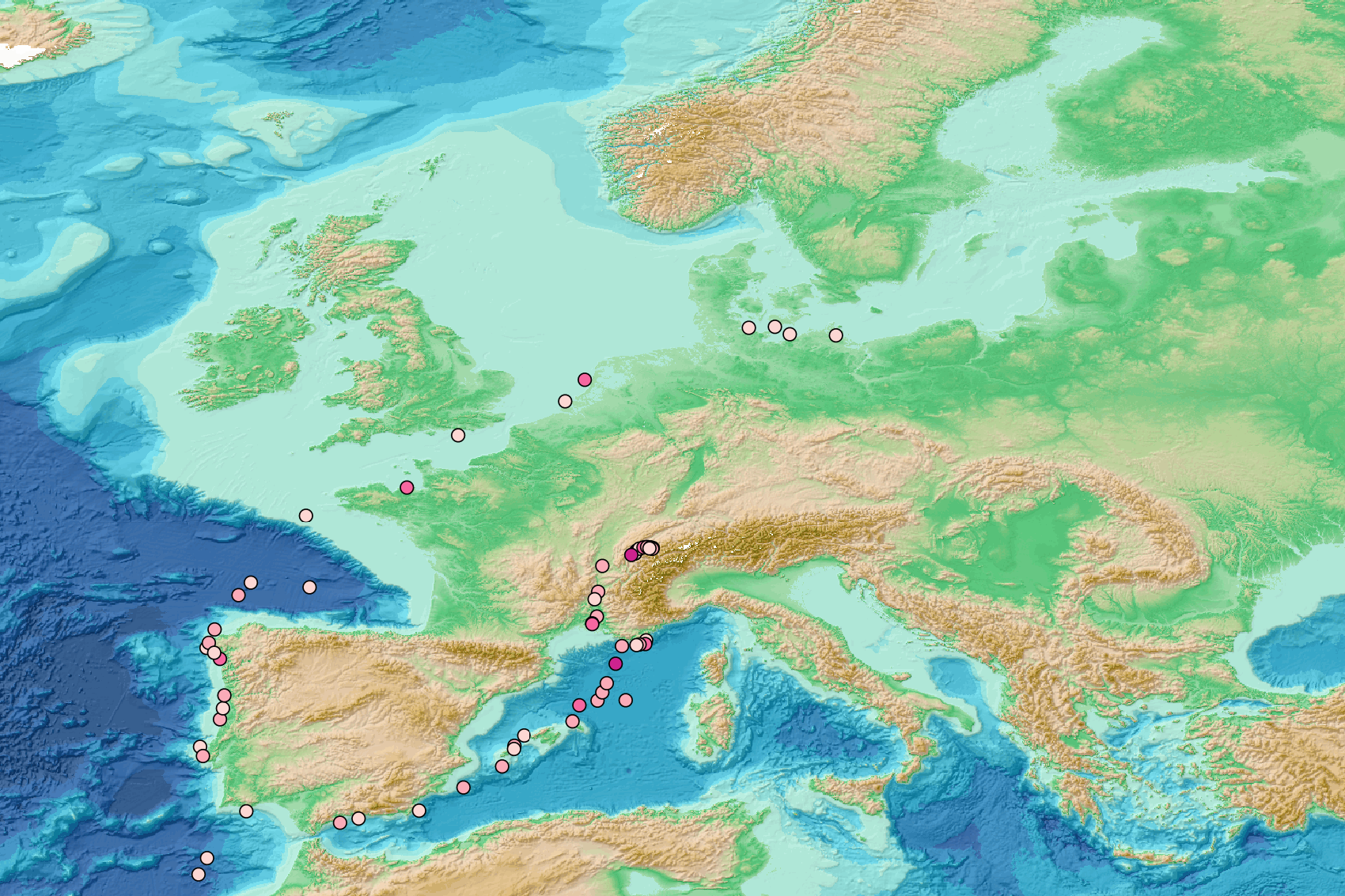Northwest Pacific Ocean (180W)
Type of resources
Available actions
Topics
Keywords
Contact for the resource
Provided by
Years
Representation types
-

This visualization product displays the density of floating micro-litter per net normalized per km² per year from specific protocols different from research and monitoring protocols. EMODnet Chemistry included the collection of marine litter in its 3rd phase. Before 2021, there was no coordinated effort at the regional or European scale for micro-litter. Given this situation, EMODnet Chemistry proposed to adopt the data gathering and data management approach as generally applied for marine data, i.e., populating metadata and data in the CDI Data Discovery and Access service using dedicated SeaDataNet data transport formats. EMODnet Chemistry is currently the official EU collector of micro-litter data from Marine Strategy Framework Directive (MSFD) National Monitoring activities (descriptor 10). A series of specific standard vocabularies or standard terms related to micro-litter have been added to SeaDataNet NVS (NERC Vocabulary Server) Common Vocabularies to describe the micro-litter. European micro-litter data are collected by the National Oceanographic Data Centres (NODCs). Micro-litter map products are generated from NODCs data after a test of the aggregated collection including data and data format checks and data harmonization. A filter is applied to represent only micro-litter sampled according to a very specific protocol such as the Volvo Ocean Race (VOR) or Oceaneye. Densities were calculated for each net using the following calculation: Density (number of particles per km²) = Micro-litter count / (Sampling effort (km) * Net opening (cm) * 0.00001) When the number of microlitters or the net opening was not filled, the density could not be calculated. Percentiles 50, 75, 95 & 99 have been calculated taking into account data for all years. Warning: the absence of data on the map doesn't necessarily mean that they don't exist, but that no information has been entered in the National Oceanographic Data Centre (NODC) for this area.
-
Aimed at understanding the mesoscale eddy’s effect on the subduction and dissipation of the North Pacific Subtropical Mode Water, a field experiment namely the Pacific Mode Water Ventilation Experiment (P-MoVE) was carried out in the northwestern Pacific Ocean ((Xu et al., 2016)-[https://doi.org/10.1038/ncomms10505]). During 27 March to 5 April 2014, we conducted 54 station surveys in an anticyclonic eddy (AE) and a nearby weak cyclonic eddy (CE) with a spacing of 0.25° (Figure 1). The conductivity-temperature-depth system (CTD 911plus, Sea-Bird Electronics) and microstructure probe (MSS-90, Sea & Sun Technology) were deployed to obtain temperature-salinity profiles and microscale velocity shear at these stations. Important Note: This submission has been initially submitted to SEA scieNtific Open data Edition (SEANOE) publication service and received the recorded DOI. The metadata elements have been further processed (refined) in EMODnet Ingestion Service in order to conform with the Data Submission Service specifications.
-
Time-series data from subsurface moorings, U5 and UB2, and vertical profile data of conductivity-temperature-depth (CTD) were collected in the southwestern East Sea (Japan Sea). The moored current-meter data were collected using rotary-current meters (RCMs) at U5 at depths of 1000 and 2000 m from November 2002 to May 2006 and at UB2 at depths of 1000 and 1600 m from May 2006 to February 2010. Sampling intervals of the RCMs were 30 minutes or an hour. Six vertical profiles of temperature and salinity were collected using standard CTD instruments near U5 in August 1995, March 1997, June 1999, September 2005, August 2008, and October 2012. The data were quality controlled and quality assured before provision to the community via SEANOE. Important Note: This submission has been initially submitted to SEA scieNtific Open data Edition (SEANOE) publication service and received the recorded DOI. The metadata elements have been further processed (refined) in EMODnet Ingestion Service in order to conform with the Data Submission Service specifications.
 EMODnet Product Catalogue
EMODnet Product Catalogue